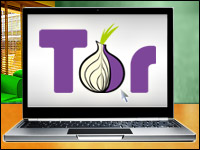
Just a few short months after Google and the Open Handset Alliance announced Android, the LiMo Foundation on Monday began rolling out its own, competing Linux-based software platform for mobile devices.
The first release of the LiMo Platform will be available in March, and the application programming interfaces (APIs) are immediately available to developers. Both will be showcased at the Mobile World Congress next week in Barcelona.
“The LiMo Platform is being readied by mobile leaders working in unison to deliver an open handset platform for use by the whole industry,” said Morgan Gillis, executive director of the LiMo Foundation. “The first release of the LiMo Platform combines technologies already extensively market proven within an array of leading handsets. This will enable initial LiMo handsets to register in the marketplace far more rapidly than handsets based on unproven technology.”
Commercially Deployed
The LiMo Platform is the result of a collaboration among the six original founding members of the LiMo Foundation, which was formed a year ago by Motorola, NEC, NTT DoCoMo, Panasonic Mobile Communications, Samsung Electronics and Vodafone.
The platform is a modular, plug-in-based, hardware-independent architecture built around an open operating system, with a secure runtime environment for support of downloaded applications. Linux was selected as its core technology because of its widespread acceptance, rich functionality and scalability, its record of success in embedded systems and mobile phones, and its potential to easily “cross-platformize” with other product categories, the LiMo Foundation said.
Nearly all of the enabling technology involved in the platform has already been commercially deployed and proven within handsets currently available under the founding members’ own brands, Gillis told LinuxInsider.
Details on which specific handsets those are will be provided next week at the Mobile World Congress, he said, as will information about the LiMo Platform software development kit (SDK).
Applications Forthcoming
Application development is already under way within the wider LiMo Foundation membership group using the APIs. “I can’t be too specific, but if you look at the companies that are inside LiMo and their areas of focus, you’ll get a pretty clear clue as to what’s coming,” Gillis said.
Security, for example, will be one important area, he said.
Earlier this month the LiMo Foundation increased its membership to 25 companies, as Trolltech and others jumped on board. Next week, further additions will be announced that will bring that roster closer to 35, Gillis said, “including some highly important names.”
LiMo vs. Android
Two critical features distinguish the LiMo Platform and Google’s Android, Gillis said. First, Android is a brand-new and relatively untested technology, whereas LiMo’s is already at work in consumer cell phones, Gillis explained.
“As we’ve seen with other platforms, it does take quite a long time to get the technology fit for use in commercial handsets,” Gillis noted.
The other big difference between the LiMo Platform and Android is that the LiMo Platform is purely a middleware platform, so it does not include the user experience layer that goes above the middleware, Gillis said.
“This is central to our strategy,” he said. “Philosophically, we believe it’s much more appropriate for individual operators and handset makers to control the technology that shapes the user experience, while it’s extremely valuable for the industry to work together to deliver the underlying technology.”
Tale of Two Platforms
Given the existence of two competing platforms, it remains to be seen how much confusion will result — if any.
“Google’s arrival into the mobile industry is extremely recent, and I’m sure there will be a number of further iterations of Google’s approach to the industry before they get settled on a format,” Gillis said. “But my observation at this stage is that Google can probably make much faster progress by minimizing business model conflict with operators and handset makers.
“If they really want to offer just a monolithic software stack, it probably makes it harder for their offering to be adopted by makers and operators,” Gillis noted. “But if they chose to deploy their user experience technology onto a middleware platform that is widely accepted, they could probably make much more progress.”
Early Battle
Increased competition and more choices among platforms will be a good thing, but “at a high level, I’m both encouraged and a little bit concerned at the same time about mobile Linux,” Bill Hughes, a principal analyst with In-Stat, told LinuxInsider.
“I’m concerned that the competition will cloud the real benefit of Linux being open,” Hughes explained. “If an application written for Linux A doesn’t work seamlessly with one written for Linux B, it’s deriving very different benefits from what users expect from Linux. I hope the competition remains at a high level, and that it’s healthy spirited competition.”
The “battle,” if it can be called that, between Android and the LiMo Platform will not be one that directly involves consumers, Chris Hazelton, senior analyst for mobile device technology and trends with IDC Research, pointed out.
“There will be some head-to-head in that those at the device vendor and carrier levels will need to decide between the two, but there won’t really be an opportunity for consumers to distinguish,” Hazelton told LinuxInsider. “The battle is going to take place before the phones even come out.”



















































